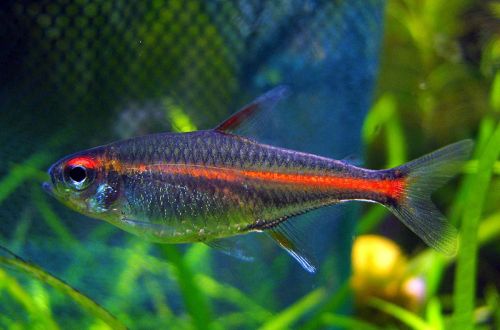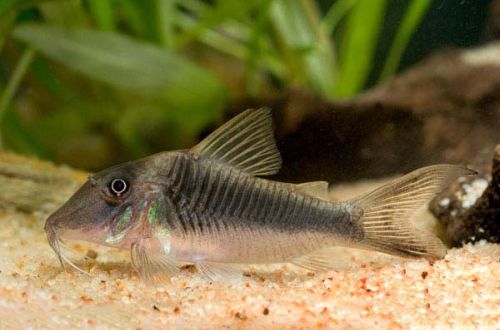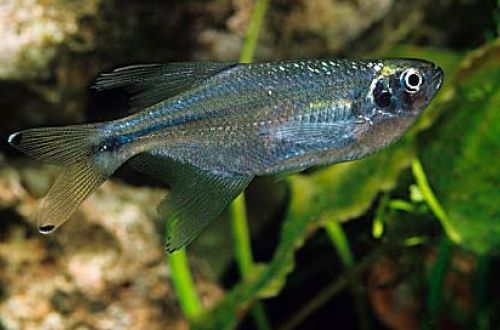
Tetra Firefly
The firefly tetra, scientific name Hemigrammus erythrozonus, belongs to the Characidae family. It got its name because of the pronounced red-orange stripe that runs along the body, from head to tail. A group of these attractive fish attract attention and stand out from the background of most of their fellows, in addition, with age they only become more beautiful!

Habitat
The species Hemigrammus erythrozonus was described by the explorer Durbin in 1909. They were discovered in South America, in the Essequibo River Guyana. Essequibo is the longest river in Guyana and is inhabited by various species. Tetra is commonly found in tributaries of the main riverbed. The water in it is colored dark brown from the decay of organic matter. They swim in groups and feed on worms, small crustaceans and plants.
Description
Tetra Firefly is a rather small species, the length does not exceed 4 cm. Outwardly, they are similar to Black Neon due to the luminous horizontal strip, but these are two completely different species. It can be easily identified as the body is almost transparent. With age, the band becomes more and more pronounced.
Food
The fish belongs to omnivorous species with pleasure uses dry industrial, live and vegetable feeds. To maintain an optimal balance in the body, it is necessary to give them quality dry food (natural or frozen) or “spoil” with small worms / bloodworms. Like most Tetras, these fish prefer to eat several times a day, the duration of one meal is approximately 3 minutes.
Maintenance and care
Hardy and unpretentious, the only important condition is clean water. Its periodic renewal by 30–50% every two weeks and an effective filtration system will help you achieve the desired result. Other equipment: heater, aerator, lighting system set to low light.
Several groups of plants are used in the design, including floating ones, but there should not be many of them. The ground is sandy, decorated with artificial snags, grottoes, etc.
Social behavior
Tetra Firefly gets along well with other calm and not large species, such as: viviparous, small cyprinids and haracins, most gourami and peaceful inhabitants of the bottom. Feel best in a group of at least 5 individuals.
Breeding / breeding
Successful breeding is achieved in a separate aquarium, which allows you to set the necessary conditions and avoid eating eggs by other fish. A spawning aquarium of 40 liters is needed, a heater and a filter are sufficient from the equipment. The lighting system can be neglected as fish and their fry prefer dim light. Water parameters – soft, acidic or slightly acidic. The design uses sandy soil and groups of rooted plants with small leaves.
Spawning usually begins after several weeks of increased feeding, when live food is added to the daily diet. The chances of breeding are higher if about 12 individuals are kept – 6 males and 6 females. When it is noticed that the abdomen of some fish has become noticeably larger, rounded, then the female is filled with caviar. She should be placed in a separate tank along with the male, perhaps several pairs will have to be temporarily relocated.
The female lays eggs on the leaves of plants, clinging to them with her abdomen, about 10 eggs are attached at a time and the male fertilizes them. At the end of spawning, parents are removed from the spawning aquarium. The fry appear after 24–36 hours, and already on the 3rd–4th day they begin to swim freely. Feed with microfeed, brine shrimp.
Diseases
Tetra Firefly is resistant to most diseases, provided that the water quality meets the requirements for this species. Read more about symptoms and treatments in the Aquarium Fish Diseases section.





